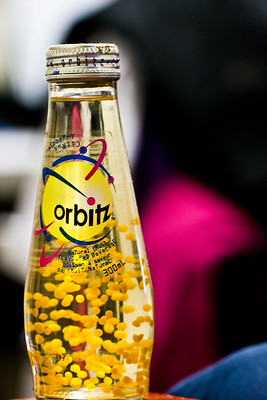Editor’s note: Ian Elmer is the U.S. managing director of PRS IN VIVO, leading the U.S. client development and qualitative teams.
The urban legend is that despite testing, the failure rate for new products launched in the grocery sector is 70-80%. Nielsen has put the number as high as 85% for CPG.
There are certainly legendary failed products that in hindsight leave us wondering, “What were they thinking?”
Orbitz Soda (arguably reminiscent of a lava lamp) was introduced in 1997 by The Clearly Food & Beverage Company of Canada, makers of Clearly Canadian, and discontinued in 1998 due to poor sales. While we may all have our opinions on the concept, it endures as a cautionary tale for what not to launch.
But even if you are launching a product that stems from a good insight into consumers’ unmet needs, the historical odds of success are still not in your favor.
In an article published by Forbes, Blake Morgan listed 10 notable new product introductions of that year that failed. Morgan ends the article with the following:
“Launching a new product is always a gamble but taking time to research customers and the market and test the product can help avoid potential future failures.”
Of course I would endorse that view. But I would also take it a step further, and perhaps flip the narrative.
If the goal is simply reducing risk, I argue that you are potentially missing a trick. The impact of optimizing a new CPG product and tipping it toward success, be it a simple line extension or a radical innovation, can be amplified if you expand your validation and embrace a greater understanding of context.
Understand product packaging in the context in which the consumer sees it in the retail environment, which is much more broadly described today as omnichannel, encompassing brick-and-mortar, e-commerce and the intersection of the two. In addition, you must remember that products at any stage of their lifecycle will stand a much better chance of success if you understand not only how they are performing at the shelf (or the e-commerce grid) but also how they perform in the context of the entire marketing mix, particularly point-of-sale marketing (POSM).

Our team recently started asking clients the following questions:
- Do you need to develop a stronger category management story for your retail partners?
- Are you investing in the right POSM, ones that truly drive consumer behavior and sales?
- Have you been thinking about a better way to explore your pricing strategy?
The answers we have gotten back are compelling. Avoiding failure is a genuine concern. Retailers are rationalizing and ruthlessly delisting products to reduce the number of SKUs in their portfolios, and in many cases competing with well-known or new brands, prioritizing shelf space in favor of their own private label offerings. But getting everything right and optimal, in the context of everything that can influence consumer choice, is an even greater imperative.
So, what do I mean by broadening context? Our team has seen numerous examples of product and packs that tested well in isolation only to fail dismally in-market in the context of POSM or an unfortunate merchandising situation.
Pack validation alone can get you one read. Pack on shelf, better. Pack on shelf in the context of various channels, and retail categories with the ancillary shopper marketing components surrounding the moment of consumer choice? Now you have a clear road map of all the elements performing together so you can win, beating those new product odds against success … not just avoiding failure.
This is why I recommend behavioral-based shopper research. This means conducting research that simulates shopping environments (mass, grocery, convenience and even drugstore) to provide a 360-degree view to illuminate the points in the consumer path-to-purchase in which circumstances are optimal for you to influence consumer choice. It is key to identify these opportunities that are driven by the pack, planogram, retail environment and the supporting POSM.
And if your nostalgia for Orbitz soda persists, you might have to satisfy it with a purchase of the Orbitz-inspired lava lamp on eBay!
Orbitz photo credit to Jesse! S?

